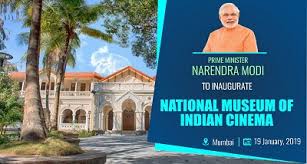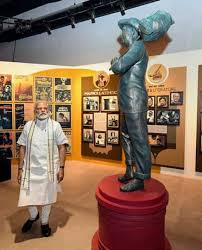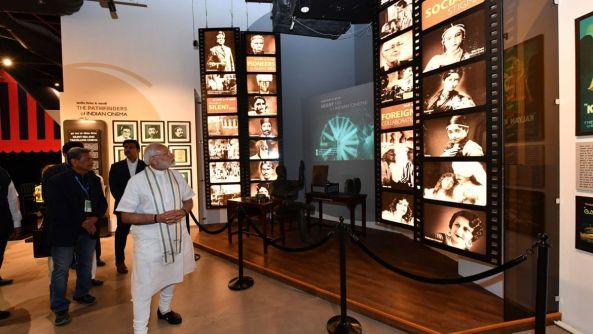The National Museum of Indian Cinema charts everything from the nation’s first film in 1913 to the billion-dollar industry of the modern day
From silent black-and-white films to colourful blockbusters bursting with song and dance, the evolution of Indian cinema is traced by a new museum in the home of Bollywood.
Costing 1.4 billion rupees (Dh72.3 million), India’s first national film museum is spread across a stylish 19th-century bungalow and a modern five-storey glass structure in south Mumbai.
“It showcases to the world outside what Indian cinema has achieved in its entirety over more than 100 years,” said Amrit Gangar, a consulting curator on the project.
The government-funded National Museum of Indian Cinema (NMIC) boasts stacks of memorabilia, recordings and film-making tools as well as interactive touch screens where visitors can watch clips from memorable movies.

Movie buffs can learn about India’s first full-length feature film, the 1913 Dadasaheb Phalke-directed Raja Harishchandra, and listen to recordings of K L Saigal, considered the first superstar of Hindi-language cinema.
They are also able to view hand-painted movie posters, including for internationally acclaimed director Satyajit Ray’s 1955 hit Pather Panchali, and click selfies beside a statue of Bollywood icon Raj Kapoor.

The museum takes visitors through “the journey of Indian cinema, from silent films to ‘talkies’ to the studio era to the new wave,” said Prashant Pathrabe, director general of the Indian government’s film department.
Bollywood is a nickname for the Hindi-language film industry that is based in Mumbai, formerly known as Bombay.
The museum celebrates not just Bollywood but also the movies made in the various regions and languages across India.
“Films are made in about 25 different regional languages in India and all are included here so that the entire country, irrespective of which part you come from, can enjoy this museum,” said Pathrabe.

Gandhi and Chaplin
The museum also hosts replicas of the Mutoscope, the camera used by the Lumiere Brothers, and the Praxinoscope – a spinning cylindrical animation device invented in France in the 1870s.
The idea for the museum was first mooted in 2006 and it was due to open in 2014 when the exhibition rooms housed in the 6,000-square-foot heritage building were declared ready.
However. the opening was delayed after the government decided to build the new wing, which includes a section exploring the impact independence hero Mahatma Gandhi had on cinema around the world, including on Charlie Chaplin.


Very interesting.❤️
LikeLiked by 1 person
I really like all the museums of the world!!
LikeLiked by 1 person
True. I’m glad there’s such a thing in the world.❤️
LikeLiked by 1 person
Lots of information for me….strange !!
Thank you
LikeLiked by 1 person
Μy pleasure!!! I am so happy to share !!!! Good afternoon from frozen Athens!
LikeLiked by 1 person
Goodmorning from either hot, hotter or hottest South India.You guys are so lucky to be living in icy weather.Iam a bit jealous.
God bless you
LikeLiked by 1 person
Good morning !! I can not live in icy weather lol!!!!
Health psychologist Sarb Johal says it’s partly due to our “internal thermostats”, which are set when we’re young, and partly because we love to chat about the weather.
We feel cheated out of fine days when summers are too cold, and robbed of our sleep when it’s too hot.
LikeLiked by 1 person
Well said Efi.Thank you
LikeLiked by 1 person